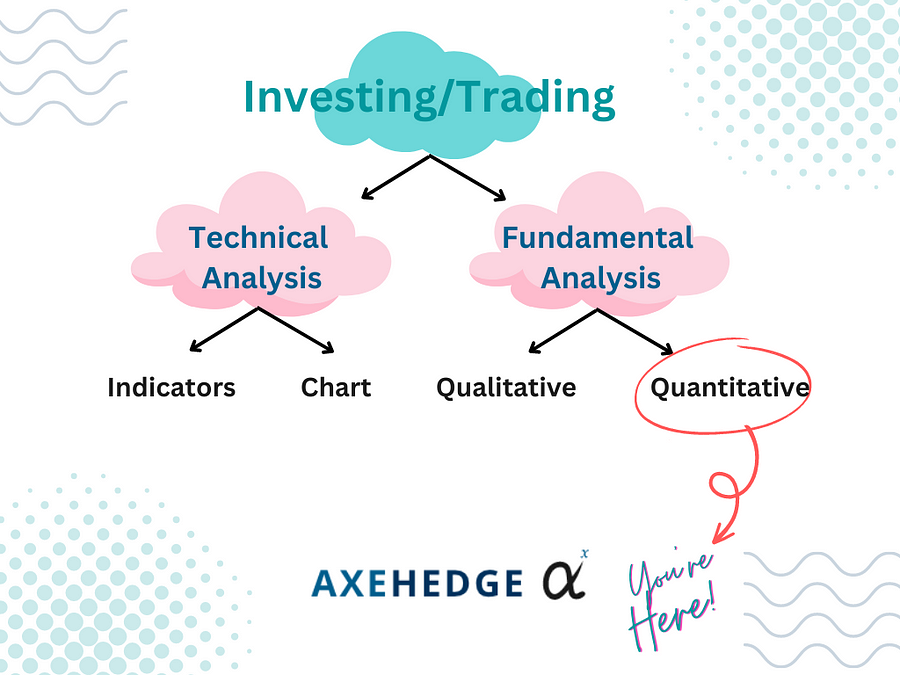So, here are a few things that you might want to look at as you quantitatively assess whether a company is worth your money or not, although do note that this list only serves as a general overview of the method rather than explaining all of these methods in detail.
1. Profitability
First, one of the priorities of many investors is whether the business is profitable or not. Well, how are you going to make money if the company itself can barely make a living? However, for a newly established company, its profitability might still not materialize, but one can look at its business model to see if the company has a bright prospect to make money in the future.
Also, be sure to see the growth of its profits — is it growing relatively better than the market, or its peers at least? How is growth impacted in times of crisis? Are they more prone to being affected by economic turbulence than their peers?
You can find it in a company’s financial statement (usually published in annual or quarterly reports).
Also read:
Fundamental Analysis: Invest Based on Annual Reports
Financial Statement: How to read a Profit Loss Statement
2. Margins
Margins here refer to the ratio of a company’s profit to its revenue. Simply, it’s a ratio of how much the company actually makes (when you reduce the cost from its total revenue) compared to the total sum of what it makes (revenue, without subtracting away the cost).
You might also want to see how much growth in margins can the company make — simply, as they move forward, have they found better ways to reduce costs while making the same/better profit?
This can also be found in a company’s financial statement.
3. Earnings
The end result that you want to know is a company’s Earnings Per Share (EPS), which tells you how much earning a company make from a single share it issues. It tells you how well the company is managing its investors’ money — and that’s what you want to know — that your money is in good hands.
Apart from that, the company’s earnings itself are relatively important for you to look at. Yes, you can find all these in the financial statements.
4. Expenses
Next, you might want to look into how efficient a company is by looking at its spending. To put it simply, why invest in a company that uses $100 to sell a handbag for $200, when you can invest in a company that can $50 to make the same handbag? Ethical concern? Yeah, that is actually true. Well, on the pretext that both companies are ethically sound, the latter would be more enticing, wouldn’t it?
This is also another thing that you can find in a company’s financial statement.
5. Operating cost
Just like expenses, operating costs tell you how efficient a company is. Looking into its operating costs, you can see if the company is overspending on operational things in contrast to its peers. You don’t want to go for companies that perform on par with their peers while overpaying their top execs.
Financial statement — it’s in there.
6. Cash flow
Cash flow is another thing provided in a financial statement, and it tells you where and how money is spent in a company. Cash flow is more accurate if you’re looking to see the exact amount of money spent within that period. It can also tell you if a company is spending more than it’s making.
Still, financial statement.
7. Debt
You will also have to look into a company’s short and long-term debt. This will tell you if a company is acquiring debt that may contribute to its growth, whether its debts are bearable, and if the company is making full use of every penny that it made from said debts.
Financial statement.
8. Working capital
Working capital refers to the money that a company has to survive in the short term, i.e., to meet its current obligations. It simply tells you if the company has enough cash to do whatever it needs to do in the short term.
In the financial statement, it can be found.
9. Asset
A company’s assets and liabilities can tell you how stable a company is. Generally, you’d want a company with asset growth, and the asset exceeds its liabilities. Sometimes there are big companies with liabilities exceeding their assets for the year.
Financial statement…
10. Investments
A company can invest in many things, plants, machinery, experts, financial instruments — you name it. A company that invests is generally a company with a good prospect for growth. Of course, some companies make bad investments, and the way that you can look into it is by looking at the financial asset to see how its investment performance is doing from time to time.
11. Pricing power
Pricing power refers to the competitive power that a company has in the market — and it’s defined by how much a company can control the price of its products/services. Say, if Company ABC increases the price of its products, will it affect the demand notably, or is Company ABC a powerful company that can have people queuing for its products even when they raise the price? This is a question that you need to seek an answer to.
Looking for pricing power will require you to refer to a company’s financial statement while also looking into a few other documents which we will explain in a separate article
12. Taxes
Well, if there’s anything that is confirmed to eat into a company’s profit, tax is it! Unless the company is awarded some tax exemptions, which is why you need to sift through the financial statement to see how well the company is doing by looking at its tax.
13. Dividends
Dividends are also a thing that you need to factor in when you decide on what company to invest in. Mentioned in the financial statements, dividends may eat up the company’s profitability, but it is also a way that companies show their shareholders that they are a stable company capable of rewarding their shareholders.
14. Financial Ratios
A financial ratio is where you have the data from a financial statement but you need to calculate it (either you do it, the company itself does it, or sometimes a third party would do it and publish it on their websites). There are a few types of ratios such as profitability, valuation, operating, and leverage — but we will dive into them in a later article.









